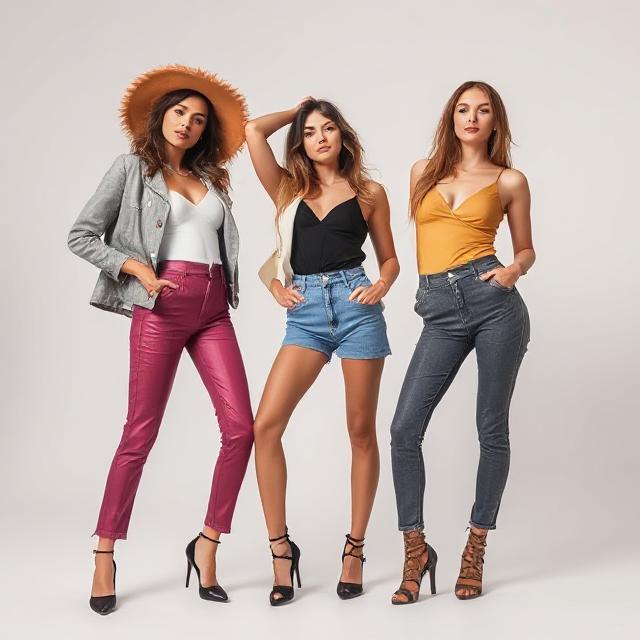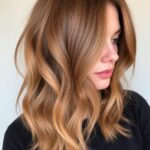Introduction to Fashion Poses
In the world of Fashion Poses and modeling, the power of a well-executed pose cannot be overstated. A compelling pose can transform an ordinary outfit into a captivating visual story, highlighting the designer’s vision, emphasizing the model’s features, and engaging viewers on a deeper level. Whether you’re a seasoned model, a budding influencer, or a photographer aiming to elevate your work, understanding the nuances of fashion poses is essential. This article delves into the art of Fashion Poses, exploring various techniques, tips, and iconic poses to help you master the craft.
The Importance of Fashion Poses
Fashion poses serve multiple purposes. Primarily, they showcase clothing and accessories in the best light, highlighting textures, cuts, and details. But beyond that, poses convey mood, attitude, and personality, adding layers of narrative to the imagery. A confident stance can evoke empowerment, while a relaxed pose might suggest ease and comfort. The right pose can also accentuate a model’s best features, create visual interest through lines and angles, and help tell a story that resonates with viewers.
Foundations of Good Fashion Posing
Before diving into specific poses, it’s important to understand some foundational principles:
- Posture: Maintain a straight, elongated spine to exude confidence and grace.
- Angles: Experiment with different angles to find the most flattering views.
- Balance: Distribute weight evenly or intentionally shift it to create dynamic compositions.
- Expression: Combine facial expressions with body language to enhance storytelling.
- Awareness of Hands and Feet: Positioning limbs thoughtfully prevents awkwardness and adds elegance.
Classic Fashion Poses
Certain poses have become staples in Fashion Poses due to their timeless appeal. Here are some iconic examples:
- The “S” Curve: This pose involves shifting weight onto one leg, causing the hips to sway in an “S” shape. It emphasizes curves and creates a natural, feminine silhouette. The upper body can lean slightly in the opposite direction for added dynamism.
- The Over-the-Shoulder Look: Turning the body away from the camera and glancing back over the shoulder creates intrigue and highlights the neckline or back details of clothing.
- The Power Stance: Standing with feet apart, hands on hips, and chest forward exudes confidence and strength. This pose is often used in editorial shoots to communicate empowerment.
- Seated Elegance: Sitting on a chair or ledge with legs crossed or extended, hands resting gracefully, adds sophistication and allows for varied expressions.
- Walking or Movement: Capturing models mid-stride introduces energy and spontaneity, showcasing how clothing moves naturally.
Tips for Dynamic and Engaging Poses
While static poses are effective, incorporating movement and variation can elevate your Fashion Poses:
- Use Props: Chairs, stairs, or even a simple scarf can add layers of interest.
- Play with Angles: Shooting from above, below, or at eye level creates diverse perspectives.
- Experiment with Hands: Place hands on hips, run fingers through hair, or hold accessories to add personality.
- Vary Facial Expressions: From sultry to joyful, changing expressions keeps the imagery lively.
- Create Asymmetry: Asymmetrical poses often feel more natural and less staged.
Posing for Different Body Types
Every body type has unique features that can be accentuated through thoughtful posing:
- Petite Models: Use elongated lines and avoid overly wide stances to create the illusion of height.
- Tall Models: Embrace expansive poses that highlight their stature, such as large arm gestures or wide-legged stances.
- Plus-Size Models: Focus on confident, relaxed poses that celebrate curves, like hands on hips or seated poses that emphasize comfort and radiance.
- Athletic Builds: Incorporate poses that showcase muscle tone and strength, such as strong arm angles or dynamic movements.
Tips for Photographers and Directors
If you’re behind the camera, guiding models to achieve the perfect pose is key:
- Communicate Clearly: Use positive reinforcement and specific instructions.
- Offer Inspiration: Show reference images or demonstrate poses yourself.
- Encourage Relaxation: Tension shows in photos; suggest quick breaks or breathing exercises.
- Adjust Small Details: Arms, fingers, head tilt—tiny corrections can make a big difference.
- Capture Candid Moments: Sometimes the most natural poses happen spontaneously.
Iconic Fashion Poses to Inspire
Many legendary models and Fashion Poses icons have contributed to the lexicon of posing. Here are a few inspiring examples:
- Kate Moss: Known for her effortless, sultry expressions combined with relaxed yet confident poses.
- Naomi Campbell: Her powerful stance and commanding presence set standards for strength and poise.
- Gigi Hadid: Demonstrates a playful, energetic approach, often incorporating movement and fun elements.
- Supermodels of the 90s: Often used exaggerated angles and expressive gestures to convey attitude.
Conclusion
Mastering fashion poses is a blend of technical skill, artistic intuition, and understanding of personality. Whether you’re a model aiming to develop your portfolio or a photographer seeking to capture striking images, practicing a variety of poses and studying iconic examples will enhance your craft. Remember, the best fashion poses are authentic and confident—so embrace your unique style and have fun experimenting. With time and experience, you’ll find your signature poses that tell compelling stories and bring fashion to life.





